Men experiencing erectile dysfunction face diminished self-confidence. They may find it challenging to establish and maintain satisfying intimate connections. It involves understanding its underlying causes. It also includes seeking appropriate medical guidance, knowing erectile dysfunction symptoms, and exploring available erectile dysfunction treatments. It will enhance both sexual and psychological aspects of well-being.
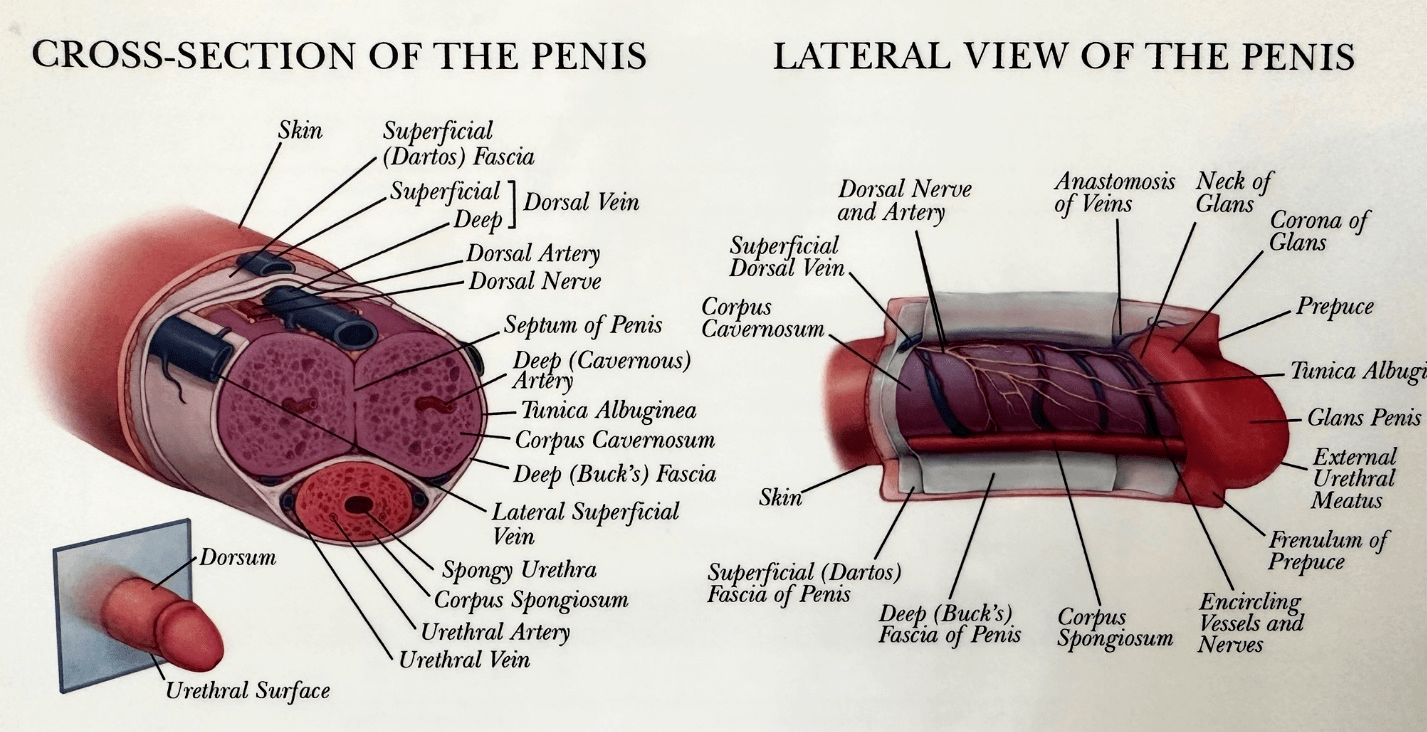
Pathophysiology
Achieving an erection involves an intricate process- the interplay of the blood vessels, nervous system, and muscles. When a man experiences sexual arousal, the nervous system transmits signals to the blood vessels within the penis, causing proper blood flow and relaxation. Simultaneously, these signals prompt the muscles in the functional segment of the penis, referred to as the corpus cavernosum to open up. This augmented blood flow surges into the expanded caverns, effectively constricting the veins.
Consequently, blood flows in but hinders from flowing out, ultimately leading to the erection of the penis. This mechanism functions like a flap valve system. In cases of erectile dysfunction, an issue arises with one or more of these vital components, resulting in challenges associated with achieving or sustaining an erection. There are several erectile dysfunction cures for it.
Causes of Erectile Dysfunction
Several factors can contribute to erectile dysfunction, including:
- Cardiovascular Disease
- High blood Pressure
- Diabetes
- Metabolic Syndrome
- Neurological conditions (Parkinson's Disease, Multiple Sclerosis, and Spinal Cord Injuries)
- Peyronie's Disease (a situation that causes curving of the penis)
- Smoking
- Substance Abuse
- Alcoholism
- Certain medications (anti-depressants, blood pressure, and anti-anxiety medications)
- Aging
- Psychological Issues (stress, anxiety, and depression)
Erectile Dysfunction (ED) and Cardiovascular Disease (CVD)
There is a complex relationship between cardiovascular disease (CVD) and Erectile dysfunction (ED). Because Erectile Dysfunction may stem from the same underlying medical conditions responsible for coronary artery disease and stroke, it is frequently seen as a warning indicator for CVD.
A decrease in blood flow to the penis is one of the most frequent causes of erectile dysfunction. Identical CVD risk factors like elevated cholesterol levels, high blood pressure, cigarette smoking, and diabetes can bring it on. Furthermore, depression, anxiety, and stress can worsen erectile dysfunction and Cardiovascular Disease.
Studies have shown men with erectile dysfunction have a much higher risk of having CVD, and the opposite is also true. This is because the underlying causes of cardiovascular disease and erectile dysfunction often interact and overlap with one another. For instance, Erectile dysfunction can result from blood vessel damage to the penis caused by elevated pressure and elevated cholesterol levels. The likelihood of CVD also increases due to identical dangers that can harm the blood arteries carrying blood to the heart and other body parts.
Treatments
There are several types of treatment for erectile dysfunction. Here are some of them-
1. Lifestyle changes
Lifestyle modifications can help improve the condition even if you have to take medication and get medical care frequently for erectile dysfunction. Below are a few lifestyle changes that might assist with ED:
- Regular Exercise - Daily exercise can help erectile dysfunction by enhancing cardiovascular wellness and increasing blood flow to the penis. Try to engage in no less than thirty minutes of moderately strenuous activity Every day, like walking briskly.
- Lose weight - Being obese or overweight poses risks of erectile dysfunction. Losing weight improves the overall health. It also decreases the risk of erectile dysfunction and enhances blood flow.
- Quit smoking - Smoking is a key risk issue for erectile dysfunction. If you quit smoking, it will enhance cardiovascular strength and amplify blood flow to the penis leading to improvements in erectile dysfunction.
- Restricted alcohol intake - Disproportionate amounts of alcohol consumption may cause erectile dysfunction by changing the hormone production and lower blood supply to the penis. Setting boundaries for alcohol consumption can help enhance overall health and decrease the dangers of it.
- Reduce stress - Erectile dysfunction has connections with anxiety and stress interfering with sexual activity. Relaxation techniques like meditation, deep breathing, and yoga are examples of stress-relieving practices that can enhance general health and lower the chances of getting erectile dysfunction.
- Healthy eating habits - Consuming a diet high in vegetables, fruits, lean protein, and grains can assist in increasing general health and lowering the chances of acquiring erectile dysfunction.
- Proper Sleep - Insufficient sleep might affect hormones and lead to erectile dysfunction. A minimum of seven to eight hours of sleep every night could reduce the probability of having Erectile Dysfunction.
Making lifestyle changes can help improve ED in addition to medical treatments. Regular physical activity, losing weight, quitting smoking, limiting alcohol intake, reducing stress, eating a healthy diet, and getting enough sleep are all lifestyle changes that can help improve ED.
2. Phosphodiesterase inhibitors (PDE inhibitors)
PDE or Phosphodiesterase inhibitors are a class of drugs commonly employed in pulmonary arterial hypertension (PAH) and erectile dysfunction treatment. These medications function by boosting blood circulation to the male reproductive organ in men with erectile dysfunction and to the pulmonary arteries in men with PAH.
The primary role of PDE inhibitors is to hinder the action of an enzyme known as phosphodiesterase, which is responsible for breaking down a substance, namely cyclic guanosine monophosphate (cGMP). It plays a pivotal role in soothing the smooth muscle cells in the lungs and penis, thereby facilitating blood flow. By impeding phosphodiesterase activity, PDE inhibitors elevate cGMP levels, leading to an improvement in blood flow.
There exist various types of PDE inhibitors, and they tend to exhibit enhanced effectiveness when one takes them before food or on an empty stomach-
- Sildenafil (Viagra) - Sildenafil stands as the initial PDE inhibitor sanctioned by the FDA for treating Erectile Dysfunction. It is administered orally 30 minutes to 60 minutes before engaging in sexual activity and can maintain its effect for up to 4 hours.
- Tadalafil (Cialis) - Tadalafil is a long-acting PDE inhibitor with a lasting impact of up to 36 hours. It can be taken either every day or before sexual intercourse, as needed.
- Vardenafil (Levitra) - Individuals can have Vardenafil orally. They can take it 25-60 minutes before sexual activity providing relief for up to 4 hours.
- Avanafil (Stendra) - Avanafil, a rapid-acting PDE inhibitor, is capable of initiating its effects in as little as 15 minutes and maintaining them for up to 6 hours.
It's crucial to emphasize that PDE inhibitors do not constitute a cure for Erectile Dysfunction or PAH and do not stimulate sexual desire. They function as a tool to enhance blood circulation, thereby aiding in achieving and sustaining an erection.
Common Side Effects of PDE5 Inhibitors
- Headache- This side effect is highly prevalent. In the event of a headache, it often resolves by taking aspirin, ibuprofen, or Tylenol just before medication intake.
- Visual changes (alterations in color vision, blurred vision, and heightened sensitivity to light)
- Indigestion
- Flushing
- Nasal congestion
- Back pain
- Dizziness
- Muscle aches
These are the most frequently observed side effects associated with PDE5 inhibitors.
Severe Side Effects: In odd cases, it can cause grave side effects like-
- Vision loss
- Hearing loss
- Sudden vision loss
- Priapism (an erection lasting more than four hours)
- Sudden hearing loss
- Chest soreness or an uneven heartbeat
Allergic Reactions: In unusual cases, there can be an allergic reaction via PDE5 inhibitors. Symptoms include:
- Itching
- Rash
- Difficulty breathing
- Swelling (particularly of the tongue, face, or throat)
Drug Interactions: PDE5 inhibitors can work together with other medicines, including-
- Antiviral medications
- Nitrates (like nitroglycerin)
- Blood pressure medications
- Alpha-blockers (like doxazosin)
- Antifungal medications
3. Vacuum erection devices
A vacuum erection device, commonly known as a penis pump, serves as a non-invasive and secure as a secure and new erectile dysfunction treatment. This apparatus employs a vacuum to augment blood flow into the penis, thereby facilitating the attainment of an erection.
How It Operates
The mechanism of a vacuum erection device entails three key components: a cylinder, a pump, and a constriction ring. To utilize the device effectively, the cylinder is positioned over the penis, generating a vacuum. This vacuum effect induces a rush of blood into the penis, ultimately resulting in the initiation of an erection.
Subsequently, once the desired level of erection is achieved, the constriction ring is placed around the base of the penis to sustain the erection.
Advantages
- No drug side effects
- Secure and non-invasive
- Use as necessary before sexual activity
- Improves sexual confidence and self-worth
- Use it in combination with other Erectile Dysfunction treatments
Instructions to Use
- Put the cylinder on top of the penis and turn on the pump to produce a vacuum.
- Slowly boost the vacuum till you reach an erection.
- Once the required level of erection is attained, put the constriction ring around the penis base to continue with the erection.
- Eliminate the cylinder and proceed with function.
Precautions: It's vital to utilize a vacuum erection tool as told by a healthcare expert. There can be tissue damage due to overuse. If there is pain or distress, stop using the device immediately and talk to a healthcare expert.
4. Penile injections
Intracavernosal injection therapy, also known as penile injections or ICI, is a treatment option designed to address erectile dysfunction in men. This therapeutic approach entails the direct injection of medication into the penis to enhance blood flow and facilitate erections.
The mechanics of intracavernosal injection therapy are relatively straightforward. Medication is administered directly into the shaft of the penis, where it acts to increase blood circulation within the penile tissue. As a result of this improved blood flow, an erection typically materializes within a relatively short time frame, ranging from 5 to 20 minutes following the injection. This erection can endure for up to an hour.
Intracavernosal injection therapy offers several advantages for men dealing with erectile dysfunction:
- Effective Erection: This method can reliably produce erections, helping individuals regain their sexual function.
- On-Demand Use: It can be used as needed, typically before sexual activity, providing flexibility in managing ED.
- Boosts Confidence: Successful outcomes with this therapy can enhance self-esteem and bolster sexual confidence.
- Complementary Treatment: It can complement other ED treatments, allowing for a tailored approach to managing the condition.
Common medications utilized in intracavernosal injection therapy include:
- Alprostadil (Edex, Caverject)
- Bimix (papaverine and phentolamine)
- Trimix (phentolamine, papaverine, and alprostadil)
Precaution - It is vital to exercise caution when considering this therapy. It should only be administered under the guidance and supervision of a healthcare professional. Incorrect usage can lead to severe side effects, notably priapism, characterized by an erection persisting for more than four hours. Priapism is a medical emergency that requires immediate attention, typically in a medical office or an emergency room setting.
5. Penile implants
Penile implants, also referred to as penile prostheses, are surgically implanted devices designed to aid in achieving and sustaining an erection. It may be comparatively a new treatment for erectile dysfunction medical intervention serves as a surgical remedy for men grappling with erectile dysfunction when other treatment methods have proven ineffective. The core of this procedure involves the surgical implantation of a device within the penis, facilitating the generation of an erection.
Penile prostheses come in two main types: inflatable and malleable, each offering distinct mechanisms for achieving and controlling erections.
- Inflatable Prostheses - Inflatable prostheses comprise two cylinders filled with fluid and a pump situated in the scrotum. When an erection is desired, the pump is activated, transferring fluid from the reservoir into the cylinders, causing them to expand. To revert to a flaccid state, the fluid is returned to the reservoir.
- Malleable Prostheses - Malleable prostheses consist of two rods surgically implanted in the penis. These rods can be manually bent upward to initiate an erection and downward to return the penis to a non-erect state.
Benefits
- Natural Appearance and Sensation: They can produce an erection that looks and feels natural.
- Enhanced Confidence: Successful use can boost self-esteem and sexual confidence.
- On-Demand Use: They can be utilized as needed before sexual intercourse.
- Potential for Improved Satisfaction: They may contribute to overall sexual satisfaction.
- Risks: However, there are notable risks associated with penile prostheses:
- Surgical and Anesthesia Risks: The procedure involves surgical and anesthesia-related risks.
- Infection: There is a risk of post-surgical infection.
- Mechanical Failure: The device may experience mechanical failures.
- Erosion: In some cases, the device can erode through the skin.
- Pain and Discomfort: Patients may experience pain or discomfort following surgery.
- Perceived Size Decrease: Some individuals may perceive a decrease in penis size, although this can sometimes be mitigated by using a vacuum erection device before surgery.
- Malfunction or Leaks: Inflatable prostheses can fail or develop leaks.
- Numbness or Reduced Sensitivity: There is a possibility of numbness or decreased sensitivity in the penis.
- Urination Difficulties: Difficulty with urination can occur.
- Scar Tissue Formation: The formation of scar tissue may lead to penile shortening or curvature.
Patients considering penile prostheses should consult with a urologist for evaluation and guidance. Following the surgery, strict adherence to the recovery and aftercare plan, along with usage instructions provided by the physician, is crucial. It will provide optimal results while minimizing complications.
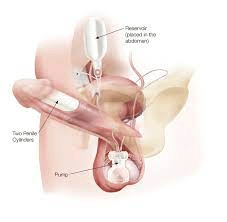
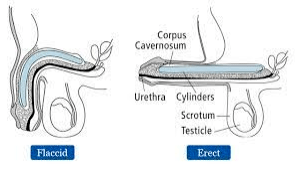
Non-surgical Erectile Dysfunction Treatments
1. P-shot
The P-shot, alternatively known as the Priapus shot, is a procedure aimed at enhancing penile function by injecting platelet-rich plasma (PRP) into the penis. This injection is intended to boost blood flow and heighten sensitivity in the area.
However, it's crucial to acknowledge certain concerns associated with the P-shot:
- Lack of Scientific Backing - The procedure lacks substantial scientific evidence demonstrating its effectiveness.
- Potential for Side Effects - There is a possibility of experiencing side effects such as pain, swelling, and redness at the injection site.
- Risk of Infection - Like any medical procedure involving injections, there is a risk of infection.
- Uncertain Long-Term Outcomes - The P-shot does not guarantee long-term results, making it challenging to assess its lasting benefits.
- Limited Availability - The procedure may not be widely accessible, particularly in certain regions.
- Cost Considerations - The cost of the P-shot can be relatively high, making it a potentially expensive treatment option.
It is essential for individuals considering the P-shot to weigh these factors carefully and consult with a healthcare professional before proceeding with the procedure.
2. Shockwave Therapy
Low-intensity shockwave therapy (Li-SWT) is a clinical term employed by urologists to describe a method utilizing shockwaves to enhance blood flow. It is essential to note that Li-SWT is not an FDA-approved treatment for erectile dysfunction.
This therapy involves the application of sound waves to augment blood circulation and sensitivity in the penis. It is typically administered in a healthcare professional's office or clinic and generally does not require anesthesia.
However, there are several concerns associated with shockwave therapy for erectile dysfunction:
- Limited Scientific Support: Scientific evidence substantiating its effectiveness remains somewhat limited.
- Potential Side Effects: Patients may experience side effects, including pain, swelling, and redness at the treatment site.
- Risk of Injury: There is a risk of injury to the penis or surrounding tissues during the procedure.
- Uncertain Long-Term Outcomes: The therapy does not guarantee lasting results, often necessitating multiple sessions for desired effects.
- Cost Considerations: The procedure can be costly, with each session typically priced around $400-500. Multiple sessions (usually six) are often required, each lasting approximately 15 minutes.
- Variation in Machine Efficacy: The effectiveness of shockwave therapy can depend on the specific machine used. Radial wave therapy, for instance, may not penetrate deeply enough or possess the necessary amplitude to induce meaningful changes in penile architecture.
- Insurance Coverage: Insurance typically does not cover the cost of Li-SWT treatment.
It is crucial to recognize that Li-SWT might not be a suitable option for most men experiencing erectile dysfunction. However, for individuals with milder forms of erectile dysfunction who have some response to medications like sildenafil, it could be considered a potential option if expectations are managed realistically.
A Special Note from SMIU
Erectile Dysfunction is a prevalent condition that can be addressed through a combination of medical interventions and lifestyle modifications. If you encounter any difficulties related to it, the healthcare provider at SMIU is there to help you. Do not hesitate at any time.
We identify the underlying causes and determine the most appropriate course of treatment tailored to your specific needs. Through our thorough patient care and guidance, you’ll find the most effective treatment to enhance your sexual health.
We have a team of individuals with varied and thorough backgrounds in urology. Each brings valuable firsthand experience in addressing distinctive challenges. We pledge to use innovative technological advancements and newfound updated information for the betterment of our patients.
Our expertise lies in delivering excellent care, with our patients always being our top priority.
- Count on personalized services designed just for you.
- We provide unique and customized care.
- Our patients are our highest priority
- We bring years of professional knowledge.
- The staff has top-notch medical experience.
- Look forward to a compassionate, health-focused community.
- Expect wide-ranging wellness aid throughout the healthcare journey.
Frequently Asked Questions
1. How prevalent is erectile dysfunction among men?
The occurrence of ED differs considerably due to the age factor but is relatively common. It has affected approximately 30 million men in the United States, and its prevalence increases with age.
2. What impact does mental health have on erectile dysfunction?
Mental health can significantly influence erectile dysfunction. Conditions, like anxiety, stress, and depression contribute to or exacerbate erectile dysfunction. Addressing mental health issues is essential for managing the problem. There are several new treatments for erectile dysfunction one is going for mental health therapy.
3. Does smoking affect erectile function?
Smoking is a known risk factor. It restricts blood flow to the penis and damages blood vessels, making it harder to achieve and maintain an erection. Quitting smoking can improve erectile function.
4. How does alcohol consumption impact erectile function?
Excessive alcohol consumption can hinder erectile function as it changes the hormone levels in the body affecting the penis. While moderate alcohol use may not have a significant impact, excessive drinking can lead to temporary or chronic erectile dysfunction. It can lead to going for weak erection treatment.
5. Can erectile be cured?
There are several erectile dysfunction cures in most cases. Treatment options include medications, lifestyle changes, therapy, and, in severe cases, surgical interventions like penile implants. The choice of treatment depends on the underlying cause and individual factors. While one can effectively manage erectile dysfunction, it may not always be curable, especially if it results from irreversible medical conditions.
